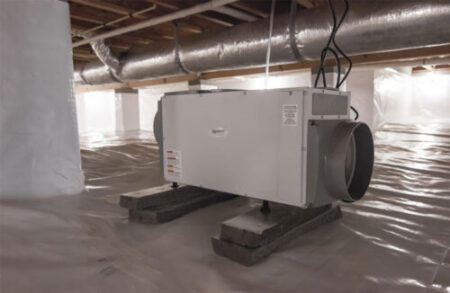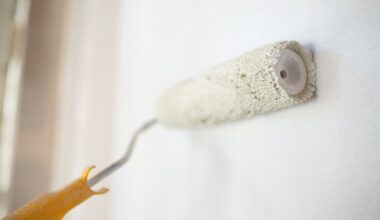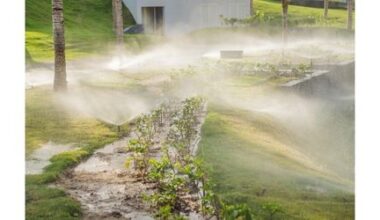As you may have guessed, the presence of damp air in your crawl space can cause serious damage to wood. Aside from promoting mold growth, the stuffy environment is ideal for termites.
As a result, a decent dehumidifier that can fit in your crawl space and eliminate extra moisture is needed. However, the sheer number of alternatives on the market might make selecting the appropriate one for your home difficult.
Don’t worry; we’ve got you covered. After testing a number of excellent dehumidifiers, we’ve come up with a list of 5 suggestions that will not disappoint. There’s also a great buying guide to help you spot the best crawl space dehumidifier’s useful features.
Benefits of a Crawl Space Dehumidifier
A crawl space dehumidifier may be necessary for those who live in hot and humid conditions. Indoor air quality is influenced by the air in your crawl space. The airflow that rises to the top of your home was created at the lowest levels of your home. This implies that wet air from your basement or crawl space permeates throughout your house.
#1. Filter for the Air
You may have noticed musty odors in your house, but did you realize that they might carry dangerous airborne particles? If you have vents, your interior air is probably not clean. As it filters the humidity inside your home, a crawl space dehumidifier protects your health.
Breathing difficulties are less likely to develop when the air is dry and clean. It also kills dust mites and keeps mold at bay. Not to add, it’s beneficial for allergy sufferers.
#2. Home Security
A dehumidifier should be used on a regular basis to keep the structure of your home in good shape. Wood rot is caused by air humidity levels of more than 28%. Condensation damages your floor joists and causes serious wood degradation. If your house’s structure is made of wood, it may not be able to support your home. A crawl space dehumidifier prevents this by keeping moisture levels at a safe level.
Reduced humidity also means a lower chance of contamination. In a wet enclosed space, termites and other humidity-loving creatures can grow. To avoid your home being devoured from the inside out, keep pests at bay.
#3. Household Expenses are Reduced
Most crawl space dehumidifiers save you money on energy because you won’t have to operate your air conditioner as much. At all times, keep humidity levels below 60% (the recommended limit for comfort).
Signs That Your Crawl Space Needs A Dehumidifier
Excess moisture can flow throughout your home in hot and humid weather.
Here are four signals that a crawl space dehumidifier is required.
- There are musty scents. Most of the time, the wetness in the crawl space provides the ideal environment for this to thrive.
- In the crawl space, there are water pipes and other plumbing materials. Condensation is caused by plumbing equipment. When a pipe leaks, humidity builds up, which can quickly become dangerous if not dealt with appropriately.
- The structural integrity of your home has been compromised. Excess moisture can cause catastrophic harm, from rotting timber to termite infestation. Rust, swelling flooring, doors, and window frames are more issues to watch out for.
- Breathing difficulties. Headaches or allergies are possible side effects. There’s also the possibility that you’ll get breathing-related issues.
Purchasing a Crawl Space Dehumidifier
When shopping for the best crawl space dehumidifier, you’ll frequently come to a halt while weighing the many possibilities. It’s also quite easy to acquire a device that will sit unused or will be useless in your crawl space. As a result of our exhaustive study, we’ve compiled a list of the most important features to look for when purchasing a dehumidifier, particularly for crawl spaces.
#1. Dimensions
One of the first things to keep in mind while shopping for a dehumidifier is that crawl areas are typically small. As a result, if you buy a large item, it may not fit in that space.
We recommend measuring the height of the available space before beginning your search for a dehumidifier. To do so, use a tape measure to determine the distance between the floor and the brick or wooden roof. Any gadget you intend to fit in the crawl space should have a maximum height of that.
#2. Coverage Area
Another important factor to consider, similar to the previous one, is the device’s coverage area. A space’s area is normally measured in square feet, and brands will state the maximum area covered for a certain space.
Before acquiring a dehumidifier, you should always assess the area of your house’s crawl space. Even while it may appear to be a good idea to acquire one that covers a vast area, it may cause the air to get excessively dry. As a result, be cautious while selecting the ideal area coverage, which will also determine the overall device size. Most dehumidifiers have a capacity of 2,500-3,000 square feet.
#3. Capacity for dehumidification
What good is a dehumidifier if it can’t bring the humidity in a crawl space down? As a result, when searching for one, make sure to look at its performance capabilities. Most dehumidifiers run for a 24-hour cycle to remove moisture from the air in a space.
The number of pints of water drawn each day is frequently mentioned by brands when marketing products with a drawing capacity (PPD). When purchasing a dehumidifier for a larger space, look for one with a higher capacity to draw the most humidity. The normal daily output is between 10-90 pints, however, there is one large unit with additional capacity.
#4. Characteristics
When looking for the best crawl space dehumidifiers, you should also consider the device’s features. A dehumidifier can be difficult to use if it isn’t connected to the right device.
The ease of use is one of the most important aspects. It’s best to acquire a device with a clear digital display that displays the settings as well as the humidity level. Remote control or Wi-Fi functionality is always a bonus because it allows you to control the item from anywhere in your house.
Another key feature of a dehumidifier is the filter. Some include additional features that help to improve air quality. The simplest thing to check for is how often the filter needs to be changed and whether the technique is simple.
8 Tips For Caring For A Crawl Space Dehumidifier
We can assist you if you are unsure how to care for your crawl space dehumidifier. Although most crawl space dehumidifiers require little care, it doesn’t mean you should ignore them.
We’ll provide you with eight pointers on how to care for your business dehumidifier in this article.
#1. Advice from the Manufacturers
For details on installation, maintenance, and warranty terms, consult the owner’s manual.
#2. Air Filters Should Be Cleaned Or Replaced
A dehumidifier filter can become blocked depending on how dirty your crawl space is. Its job is to catch hazardous airborne particles so you don’t breathe them in. The performance of a dirty or used filter will be impacted. Air will not flow easily through the dehumidifier unless it is cleaned on a regular basis.
#3. Location of the Unit
Your crawl space dehumidifier should be free of obstructions near the exhaust and air intake valves to work at its best. While your dehumidifier is running, keep all access doors and windows closed.
Because additional humidity sources are restricted, the unit performs best in enclosed settings. If there is a lot of moisture coming in through a window, your unit will have to work much harder. Before starting the installation, think about the temperature of the room. Some models are better at handling lower temperatures than others.
#4. Grills for the intake and exhaust of air
Keep debris and dust out of your airways. Remove dirt from the grills with a vacuum brush. Depending on how filthy the air in your space is, repeat this process every few months.
#5. Tank for Washing Water
Debris can get into the water container and create a mold breeding ground. Keep an eye on the tank and clean it on a regular basis to avoid this. To reduce bacteria, use soap or disinfectant.
#6. Condensation Control
The outside of your dehumidifier is corrosion-resistant, but the inside isn’t. For example, wipe away any extra moisture from the control panel.
#7. Shortening the compressor’s cycle time is not a good idea.
The compressor can be damaged if the dehumidifier is turned on and off within a few minutes. There isn’t enough time for the system to balance the pressure within. This increases the risk of overheating and can result in a short circuit. Consider a model with an automatic delayed start to avoid such difficulties.
#8. The coils are covered in frost and ice.
You’ll need to keep an eye on ice accumulation unless your dehumidifier features auto defrost. If the temperature drops below freezing, a frosted film may form on the condenser of the dehumidifier. You’ll also have to inspect the coils on a regular basis.
The Best Crawl Space Dehumidifiers
There are numerous alternatives to consider, including selecting the appropriate size, determining whether a pump is required, and selecting convenience features such as remote controls and filters. The following list, which includes some of the best crawl space dehumidifiers on the market, strives to make the purchase process a little easier.
#1. AlorAir 113 Pint Commercial Dehumidifier
Anyone looking for a medium-capacity appliance to remedy their crawl space moisture concerns should look at AlorAir’s Commercial Dehumidifier. This model has a saturation capacity of 113 PPD and an AHAM capacity of 53 PPD, making it suited for spaces up to 1,300 square feet (which includes most residential crawl spaces). It comes with a filter that can be easily removed from the side of the machine to extend the life of the equipment.
Aside from its capacity, this gravity-draining machine comes with a slew of appealing features. A memory restart feature allows this device to pick up where it left off after a power interruption, and an automatic defrost setting protects the coils from freezing. Although a separate purchase, this AlorAir type is also compatible with remote control for easy settings and readings.
Specifications
- Area of Coverage: 1,300 sq. ft.
- 120 CFM Air Flow Capacity
- 113 PPD and 53 PPD AHAM Pint Capacity
Pros
- In-built Filter
- The design is gravity-draining.
- Setting for automatic defrost
Cons
- The remote control is available separately.
- Pricey
#2. ALORAIR 198 PPD Basement/Crawlspace Dehumidifiers
A heavy-duty upgrading unit like AlorAir’s Basement/Crawlspace Dehumidifier would be the way to go if you have a large space with substantial excess moisture issues. In saturated conditions, this model has a 198 PPD rating, which means it can cover up to 2,600 square feet.
This AlorAir model not only has the capacity to handle larger spaces, but it also offers convenient features like automatic defrost and remote control compatibility (albeit this is an additional cost). If the power goes out, the dehumidifier will automatically restart and begin dehumidifying without any input from the user.
This unit already has a condensate pump installed, allowing users to easily remove water by pumping it away rather than relying on gravity. This gives you additional options when it comes to crawl space dehumidifier installation.
Specifications
- 2,600 square feet of coverage
- 210 CFM Air Flow Capacity
- 198 PPD Pint Capacity
Pros
- Large crawl spaces are ideal for this product.
- A pump for condensate is incorporated.
- Restarting on its own
- Installation is simple.
Cons
- The remote control is available separately.
#3. hOmeLabs 4,500 sq. Ft. Energy Star Dehumidifier
The largest crawl spaces can stay dry and pleasant with the hOmeLabs Energy Star Dehumidifier. The hOmeLabs dehumidifier has a removable 1.6-gallon collection tank and 50 PPD, but for hands-free emptying, it works best when connected to a drain hose (not included).
The hOmeLabs dehumidifier is powerful enough to handle the toughest humidity problems. It can remove humidity from areas up to 4,500 square feet. It’s also straightforward to use, with the digital control panel allowing customers to choose between a timed or continuous mode, which means the machine will run for 24 hours until it’s turned off or the tank is full.
This item will automatically turn back on and resume the last setting mode if the power goes out. The cleaned and re-inserted filter is likewise detachable and reusable.
Specifications
- 4,500 square feet of coverage
- 165-188 CFM Air Flow Capacity
- 50 PPD (pints per minute)
Pros
- Control panel with digital display
- The tank and filter are detachable.
- The drainage hose allows for hands-free tank emptying.
- After a power loss, it automatically turns on.
Cons
- The drain hose is not included.
#4. ALORAIR 120 PPD Basement/Crawl Space Dehumidifiers
Large units are inefficient and waste energy in smaller crawl areas. A unit like this one from AlorAir is worth looking at for those smaller spaces. With a maximum PPD in saturation of 120, this model can remove up to 55 PPD AHAM from crawl spaces and other areas up to 1,300 square feet. This smaller dehumidifier is also Energy Star certified, which makes it more cost-effective to run.
This model comes with a lot of automatic functions, which adds to its appeal. It contains an automatic defrost mode to keep the coils from freezing in the winter, as well as a filter that can be removed to keep the coils clean.
For ultimate convenience, the AlorAir includes a gravity drain as well as remote control compatibility (though it is a separate purchase). In the event that the power goes out, this unit will remember its settings and continue to dehumidify until the power is restored.
Specifications
- Area of Coverage: 1,300 sq. ft.
- 130 CFM Air Flow Capacity
- AHAM has a pint capacity of 120 PPD and a pint capacity of 55 PPD.
Pros
- Certified by Energy Star
- Defrost feature that works automatically
- The filter is detachable, and there is a gravity drain incorporated.
- Restarting on its own
Cons
- The remote control is available separately.
#5. 50-pint GE Energy Star Portable Dehumidifier
This GE unit is a high-performance portable crawl space dehumidifier that can remove 50 PPD from a 1,500-square-foot area while providing proper humidity control. It may operate continuously if necessary, and a three-speed fan boosts airflow to help remove damp areas faster.
When the bucket is full, an audio alarm sounds and an alert sounds when the air filter needs to be rinsed. It also offers auto defrost and automatic restart in the event of a power outage. Bucket capacity is better than many at 15 quarts.
Constant draining is a possibility, and this is where GE’s biggest advantage comes into play: Unlike many dehumidifiers, the GE model can pump water up to 16 feet from the unit to a convenient sink or other outlets. There’s also a hose provided.
Specifications
- Area of Coverage: 1500 sq. ft.
- 200 CFM Air Flow Capacity
- 50 PPD (pints per minute)
Pros
- 3 different speed options
- Features such as automatic restart and defrost
- When the tank is full, an alarm sounds.
- A hose for drainage is included.
- Wheels that slide easily
Cons
- Power consumption is high.
How Did We Pick the Best Dehumidifiers for Crawl Spaces?
Our hand-picked list includes some of the best dehumidifier brands as well as important aspects like coverage area, airflow, pint capacity, and special features.
The finest picks have powerful 22 to 200 CFM ratings and are designed for a variety of crawl spaces ranging from 200 to 6,500 square feet. The many units have large pint capacities of up to 198 PPD, which means you won’t have to empty them as often. To reduce dehumidifier maintenance, certain models incorporate self-emptying tanks. Several of the dehumidifiers we chose had special features such as automatic shutdown and defrosting, as well as detachable and reusable filters.
Frequently Asked Questions
Should you put a dehumidifier in a crawl space?
Moisture can accumulate inside the crawl space as a result of ductwork condensation, ground moisture evaporation, excessive outside humidity, and other factors. A dehumidifier is required to condition the crawl space and maintain optimum humidity levels all year.
What kind of dehumidifier do I need for a crawl space?
Because crawl spaces are likely to be moist, a dehumidifier with a 50-pint tank or larger is advised to ensure adequate drying.
What is the best way to dehumidify a crawl space?
The best way to dehumidify a crawl space is to install a crawl space humidifier.
How long should a dehumidifier run in a crawl space?
A humidifier should run for at least 12 hours a day.






